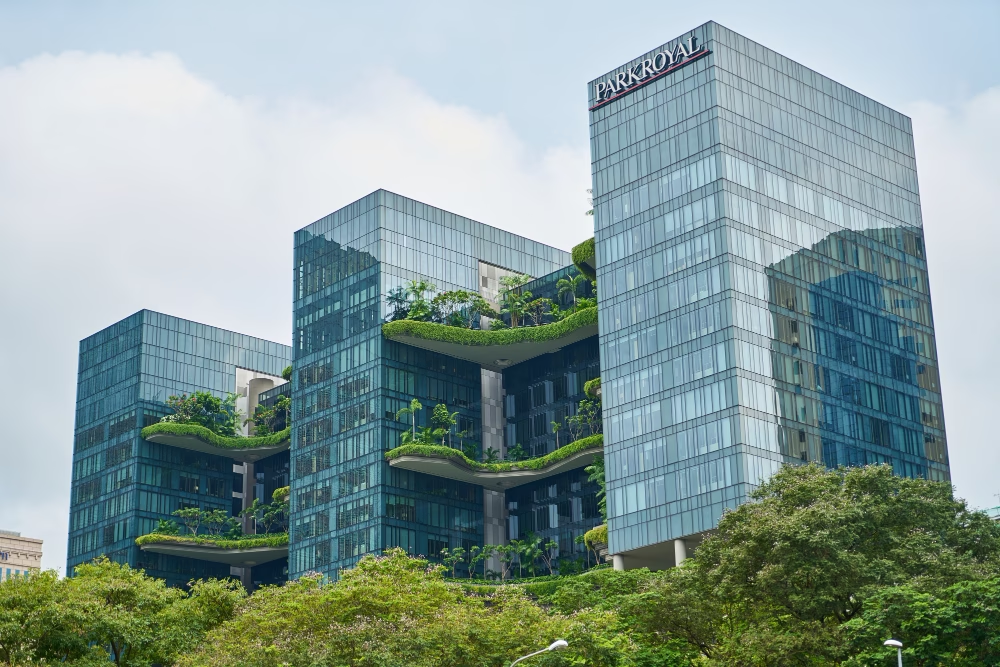We are updating residential planning rules to boost the supply of good quality homes and improve our local streets.
The Victorian Government is updating Victoria’s residential planning rules to boost the supply of good quality homes and improve our local streets.
We are updating Victoria’s residential planning rules to make it faster and easier to build more liveable and sustainable medium density homes.
Two new sets of planning rules, the ‘Townhouse and Low-Rise Code’ (the Code) and the ‘4 Storey Apartment Standards’, set basic but important standards for good development, like enough setback and tree coverage so a building suits the neighbourhood, and well-sized bedrooms and decent sunlight so it’s a nice place to live. Neighbours will be protected from overshadowing and onlooking, and will benefit from new requirements to include trees on properties, making the surrounding streets greener and cooler.
The new Code will allow faster permits and greater certainty for townhouses and apartment buildings up to three storeys, so long as they meet our strong new standards.
In Victoria’s Housing Statement, The Decade Ahead 2024-2034, the Victorian Government committed to delivering housing and planning reforms that benefit Victorians and make it easier for builders, buyers and renovators to get permits. The new Code is the latest step in that journey and will help councils and planners make good decisions faster for residential development across Victoria.
The new Code and standards build on the 14 standards introduced in late 2023 and finalise the codification of these standards into Victoria’s planning system.
What is changing?
Both the Townhouse and Low-Rise Code and the 4 Storey Apartment Standards will make sure residents and neighbours benefit from higher quality new homes.
The new Code will implement new rules, called “deemed to comply” standards, for assessing multi-residential developments of three storeys or less. If a planning application is “deemed to comply” with these standards, it will benefit from a faster and more certain permit process.
Because the Code already includes strong protections for neighbours, there will be no right of appeal process for planning applications that meet these standards.
This will make planning assessment and decision making quicker and more certain while improving liveability, sustainability and amenity for residents and neighbours.
This change amends Clause 55 (Townhouse and Low-Rise Code) of all planning schemes to give greater certainty and faster decisions for developers and the community.
It also creates Clause 57 (4 Storey Apartment Standards), which is not part of the deemed to comply assessment.
Clauses 56 and 58 remain unchanged.
When does this change take place?
The changes are expected to be gazetted in early March as Amendment VC267.
Once the changes are gazetted, we will work closely with councils and industry partners to build understanding about these new and updated clauses and their impacts on applying for and reviewing planning permits.
We will release a design book with further guidance to support councils, planners and practitioners to work with the new Code and standards.
Here is a summary of the changes to the clauses.
New standard | Changes |
|---|
Neighbourhood character |
B2-1 Street setback | - Reduced front set back from 9m to 6m
- No longer the average of the two adjoining. The standard takes the lesser setback of a dwelling on an abutting allotment.
|
B2-2 Building height | No change. |
B2-3 Side and rear setbacks | The ability to choose from two side and rear setback options: - Existing B17 side and rear setback standard; or
- a new side and rear setback standard.
- From the north boundary set back 3m up to a building height of 11m and 4.5m for a building height over 11m and from the south boundary set back 6m up to a building height of 11m and 9m for a height over 11 metres.
|
B2-4 Walls on boundaries | No change. |
B2-5 Site coverage | Change from 60% in all residential zones to: - 60% - Neighbourhood Residential Zone & Township Zone
- 65% - General Residential Zone
- 70% - Residential Growth Zone, Mixed Use Zone and Housing Choice and Transport Zone.
|
B2-6 Access | New requirement to protect existing street trees by requiring the location of a vehicle crossover or accessway to not encroach the tree protection zone of any tree in a road by more than 10%. |
B2-7 Tree Canopy | Formerly B13 Landscaping. New tree canopy cover requirement of 10% site area up to 1000m2 and 20% of site area more than 1000m2. Existing trees can be used to meet the requirement. |
B2-8 Front fence | No change. |
Liveability |
B3-1 Dwelling diversity | Requires development with more than 10 dwellings to provide a diversity of housing by providing: - One dwelling that contains a kitchen, bath or shower, bedroom and a toilet and wash basin at ground floor level for every 10 dwellings.
- One dwelling that includes no more and no less than 2 bedrooms for every 10 dwellings.
- One dwelling that includes no more and no less than 3 bedrooms for every 10 dwellings.
|
B3-2 Parking location | Limited change with same metrics. |
B3-3 Street integration | Standard simplified and made deemed to comply with elements from existing standards B5 Integration with the street, B12 Safety, B31 Design detail and B34 Site services. |
B3-4 Entry | Standard simplified and made deemed to comply with elements from existing standards B26 Dwelling entry, B12 Safety and B25 Accessibility. |
B3-5 Private open space | Reduced from 40m2 to 25m2 at ground level. |
B3-6 Solar access to open space | No change. |
B3-7 Functional layout | Applies the minimum apartment bedroom and living room dimensions to all dwellings. |
B3-8 Room depth | Applies the minimum apartment room depth requirements to all dwellings. |
B3-9 Daylight to new windows | No change. |
B3-10 Natural ventilation | Applies the apartment natural ventilation requirements to all dwellings. |
B3-11 Storage | No change. |
B3-12 Accessibility for apartment developments | No change. |
External amenity |
B4-1 Daylight to existing windows | No change. |
B4-2 Existing north-facing windows | No change. |
B4-3 Overshadowing secluded open space | Reduces allowable overshadowing to 50 per cent. |
B4-4 Overlooking | Standard to no longer apply to bedrooms. |
B4-5 Internal views | Changes standard to no longer apply to bedrooms. |
Sustainability |
B5-1 Permeability and stormwater management | Updated to refer to the performance objectives in the Urban stormwater management guidance (EPA Publication 1739.1, 2021). |
B5-2 Overshadowing domestic solar energy systems | New ESD standard to protect existing rooftop solar from overshadowing. |
B5-3 Rooftop solar energy generation area | New ESD standard to provide area for rooftop solar energy generation. |
B5-4 Solar protection to new north-facing windows | New ESD standard to provide shading to north facing windows for summer heat. |
B5-5 Waste and recycling | New ESD standard to require: - An internal waste and recycling storage space of at least 0.07 cubic metres with a minimum depth of 250 millimetres.
- Minimum individual and shared bin storage areas for all dwellings.
|
B5-6 Noise impacts | Amended to minimise the impact of mechanical plant noise located in the development. |
B5-7 Energy efficiency for apartment developments | No change. |
The following standards have been deleted or amalgamated:
- 55.02-1 Neighbourhood character (Deleted)
- 55.02-2 Residential policy (Deleted)
- 55.02-4 Infrastructure (Deleted)
- 55.03-5 Energy efficiency (Amalgamated with new ESD energy standards)
- 55.03-6 Open space (Deleted)
- 55.03-7 Safety (Amalgamated with street integration)
- 55.05-1 Accessibility (Amalgamated with street integration)
- 55.06-1 Design detail (Amalgamated with street integration)
- 55.06-3 Common property (Deleted)
- 55.06-4 Site services (Amalgamated with street integration)
- 55.07-2 Communal open space (Deleted)
- 55.07-3 Solar access to communal outdoor open space (Deleted)
- 55.07-4 Landscaping (Replaced with tree canopy)
- 55.07-5 Integrated water and stormwater management (Amalgamated with permeability and stormwater management)
- 55.07-6 Access (Amalgamated with access)
- 55.07-7 Noise impacts (Amalgamated with noise impacts)
- 55.07-9 Private open space (Amalgamated with private open space)
- 55.07-10 Storage (Amalgamated with storage)
- 55.07-11 Waste and recycling (Amalgamated with waste and recycling)
- 55.07-14 Windows (Amalgamated with daylight to new windows)
- 55.07-16 Building entry and circulation (Amalgamated with entry)
- 55.07-17 Integration with the street (Amalgamated with street integration)
- 55.07-18 Site services (Amalgamated with street integration)
- 55.07-19 External walls and materials (Deleted)
More information about the changes will be available after the gazettal on our Residential Development page.




